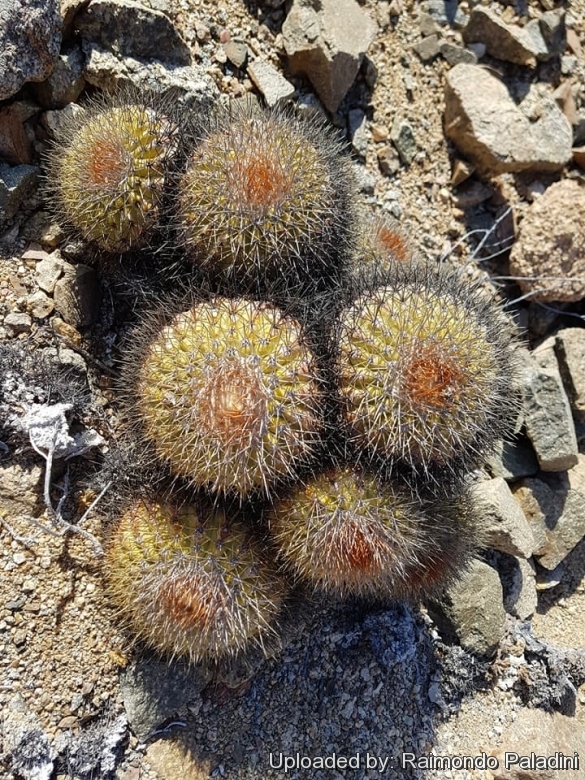
Copiapoa serpentisulcata Photo by: Raimondo Paladini
Copiapoa serpentisulcata, Chile, January 2018.
Origin and Habitat: Chile, Región Antofagasta, north of Chañaral to Pan de Azucar National Park.
Altitude: 30 to 400 m
Habitat: Coastal areas of the Atacama desert on marine terraces usually restricted to granite outcrops, usually at the base of the rocks on sand and gravel. They grows isolated or in association with Eulychnia iquiquensisSN|8188]]SN|8188]] and Copiapoa cinerascensSN|1420]]SN|1420]]. It's a very drought tolerant species. Despite the lack of rain where it lives, the extreme aridity is attenuated by the frequent, often dense, coastal fogs. The fog tends to concentrate in the form of a cloud band. It shows a recurrent pattern; usually it is overcast in the early mornings, the clouds dissipating during the late morning and returning during the late afternoons.
Synonyms:
See all synonyms of Copiapoa serpentisulcata
back
Accepted name in llifle Database:Copiapoa serpentisulcata F.RitterCactus (Paris) xv. No. 66, 22 (1960)Synonymy: 5
back
Common Names include:
LITHUANIAN (Lietuvių): Ežinis miglinėlis
SPANISH (Español): Cacto de la Serpiente
SWEDISH (Svenska): Tuvrandkaktus
Description: Copiapoa serpentisulcataSN|9824]]SN|9824]] is a solitary to strongly branching species that eventually can form clusters up to 60 cm tall and up to one meter in diameter.
Root: Thickened, conical and short.
Stem: Flattened globular, grey-green, pale brown to coppery-brown in full sun, 6-10 cm in diameter. Apex flattened, covered with yellow felt and densely spiny.
Ribs: 18-23 wider than high with pronounced nipples and wavy grooves between the ribs.
Areoles: Circular pale yellowish, later becoming grey.
Spines: Light brown or amber with darker brown tips becoming grey with age, straight, acicular, of which 1 to 4 central spines 1-2 cm long and 6-8(rarely more) protruding radials 1-1,5 cm long.
Flowers: yellow 2,5 to 3 cm long and fragrant with the typical smell of Copiapoa. Inner tepals rounded at the tip, pale yellow , outer tepals with reddish midrib.
Fruit: Covered with triangular scales, 12 to 15 mm in diameter, reddish green to red or brownish-salmon.
Seeds: 1 x 0.6 mm.
Subspecies, varieties, forms and cultivars of plants belonging to the Copiapoa serpentisulcata goup
 Copiapoa serpentisulcata, Chile, January 2018. Photo by: Raimondo Paladini
Copiapoa serpentisulcata, Chile, January 2018. Photo by: Raimondo Paladini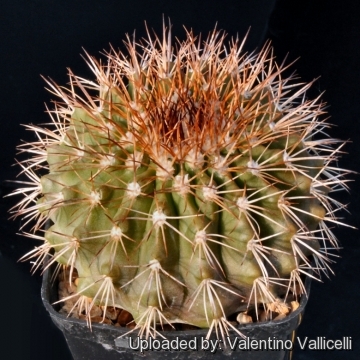 Copiapoa serpentisulcata Photo by: Valentino Vallicelli
Copiapoa serpentisulcata Photo by: Valentino Vallicelli Copiapoa serpentisulcata, habitat, Chile, January 2018. Photo by: Raimondo Paladini
Copiapoa serpentisulcata, habitat, Chile, January 2018. Photo by: Raimondo Paladini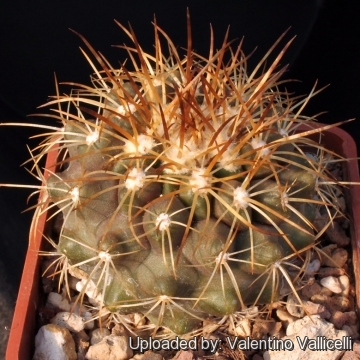 Copiapoa serpentisulcata Photo by: Valentino Vallicelli
Copiapoa serpentisulcata Photo by: Valentino Vallicelli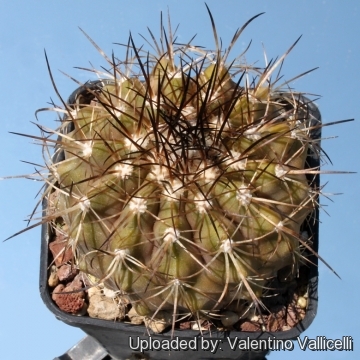 Copiapoa serpentisulcata Photo by: Valentino Vallicelli
Copiapoa serpentisulcata Photo by: Valentino Vallicelli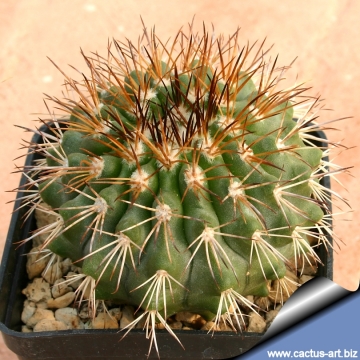 Copiapoa serpentisulcata Photo by: Cactus Art
Copiapoa serpentisulcata Photo by: Cactus Art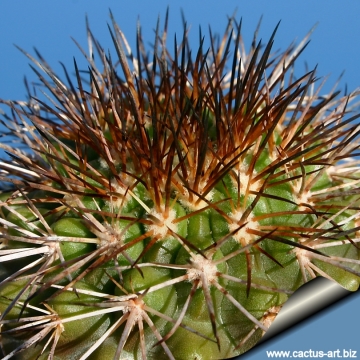 Copiapoa serpentisulcata Photo by: Cactus Art
Copiapoa serpentisulcata Photo by: Cactus Art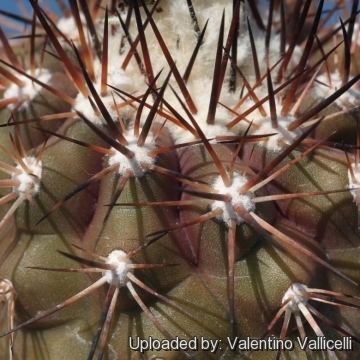 Copiapoa serpentisulcata Photo by: Valentino Vallicelli
Copiapoa serpentisulcata Photo by: Valentino VallicelliCultivation and Propagation: This extremely slow growing cactus is kept for the beauty of its form. It must be protected from excessive heat and sun in summer, and seems to do best in cultivation with a bit of shade. It requires light but regular waterings in summer, but let the soil mix dry between waterings, Prone to rot if over-watered. Needs good drainage. Keep warm and dry in winter (10°C) to avoid rot. Not highly tolerant of a great deal of frost. (Frost tolerance 0°C)
Propagation: Seeds (or offsets if available), Grafting is often used to speed growth rate and to create a back-up to plants in collection.
Your Photos

by Valentino Vallicelli
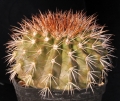
by Valentino Vallicelli

by Valentino Vallicelli





















